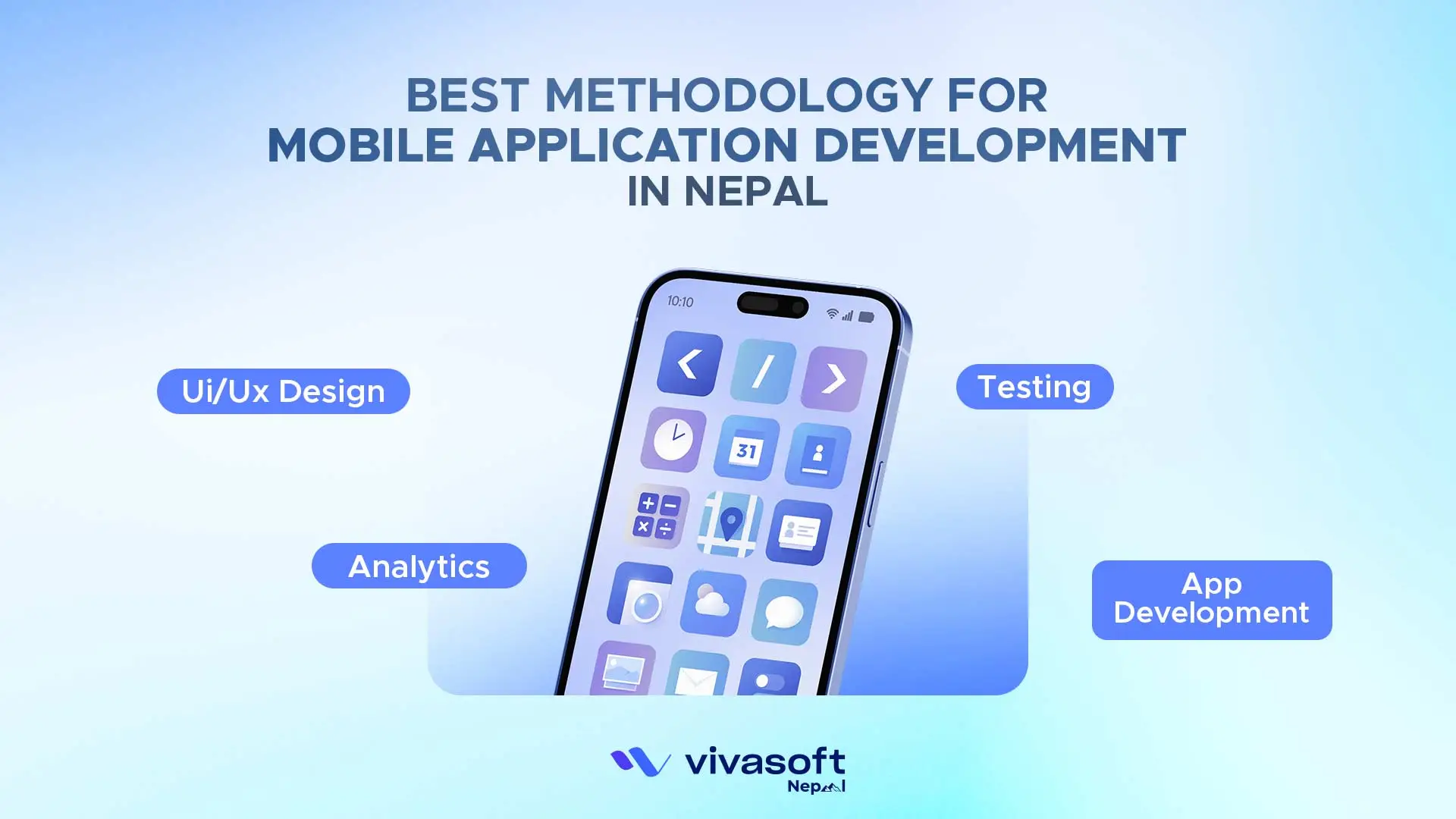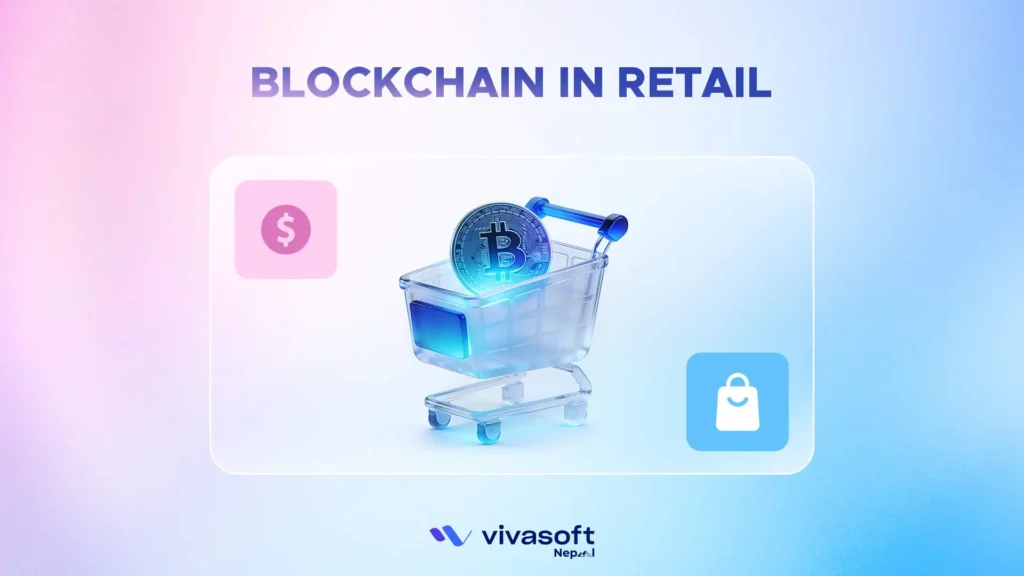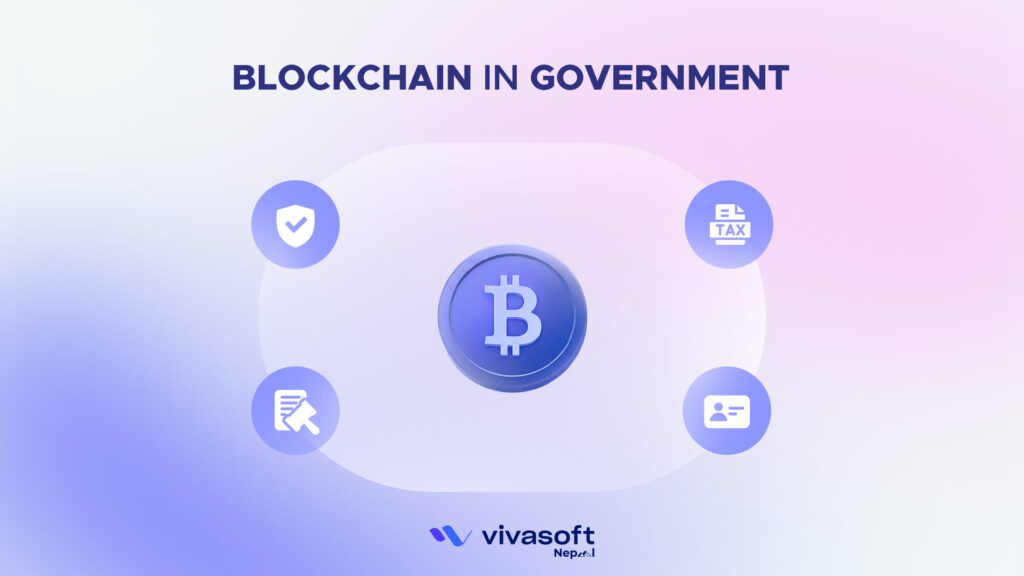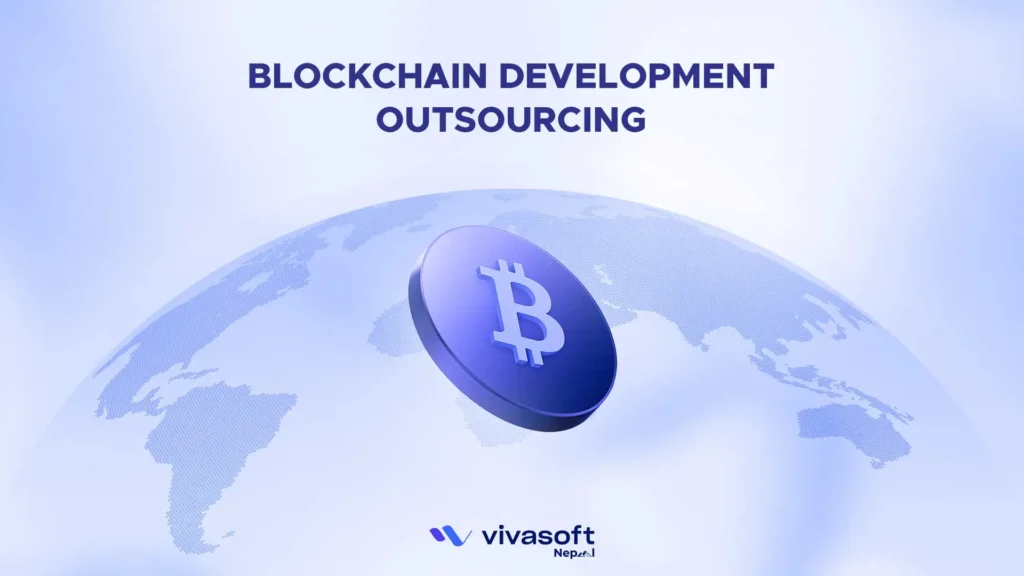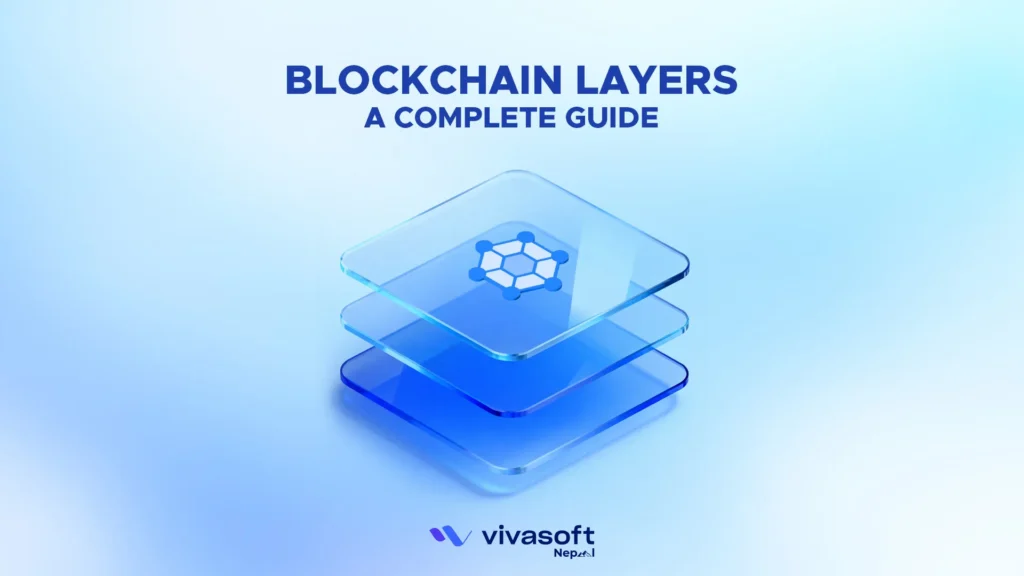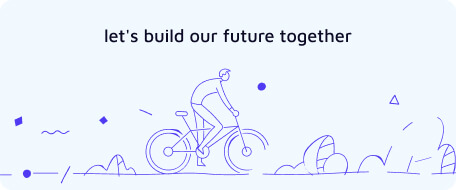Mobile application development methodologies shape everything including speed, flexibility, and how well the final product works. Some projects move best in fast, small bursts, seeing results instantly, while others need careful planning and steady progress.
Certain app development methods slice away unnecessary steps, keeping work lean and sharp, while others combine approaches to handle both change and structure.
Understanding these differences, knowing when each method clicks, makes the app development journey smoother and the outcome far stronger.
What are the Top Methodologies to Use for Mobile Application Development?
When building a mobile app, the method used to manage the work can completely change the outcome. It affects how fast progress happens, how problems get handled, and whether the final product actually holds up.
Agile Methodology
Agile methodology is a way to stay flexible. It means breaking the work into small, manageable segments instead of waiting till the end to show results.
Each segment delivers something the developer can actually use or test. This makes it easier to change direction if priorities shift or new feedback comes in.
Agile approach fits best when apps need regular updates and quick responses. There are different ways to put Agile into action, each with its own style and focus:
- Kanban: It’s like seeing the whole project laid out in front of everyone. Tasks move along, little issues show up immediately, and work just keeps rolling, calm and steady, even when things shift at the last minute.
- Lean: Lean is about eliminating everything unnecessary, leaving only what actually counts. The team moves sharply, focused, wasting nothing, pushing forward with purpose.
- Scrum: Scrum breaks work into little sprints, checking in often to see how things are shaping up. It balances clear goals with the space to adapt when surprises appear.
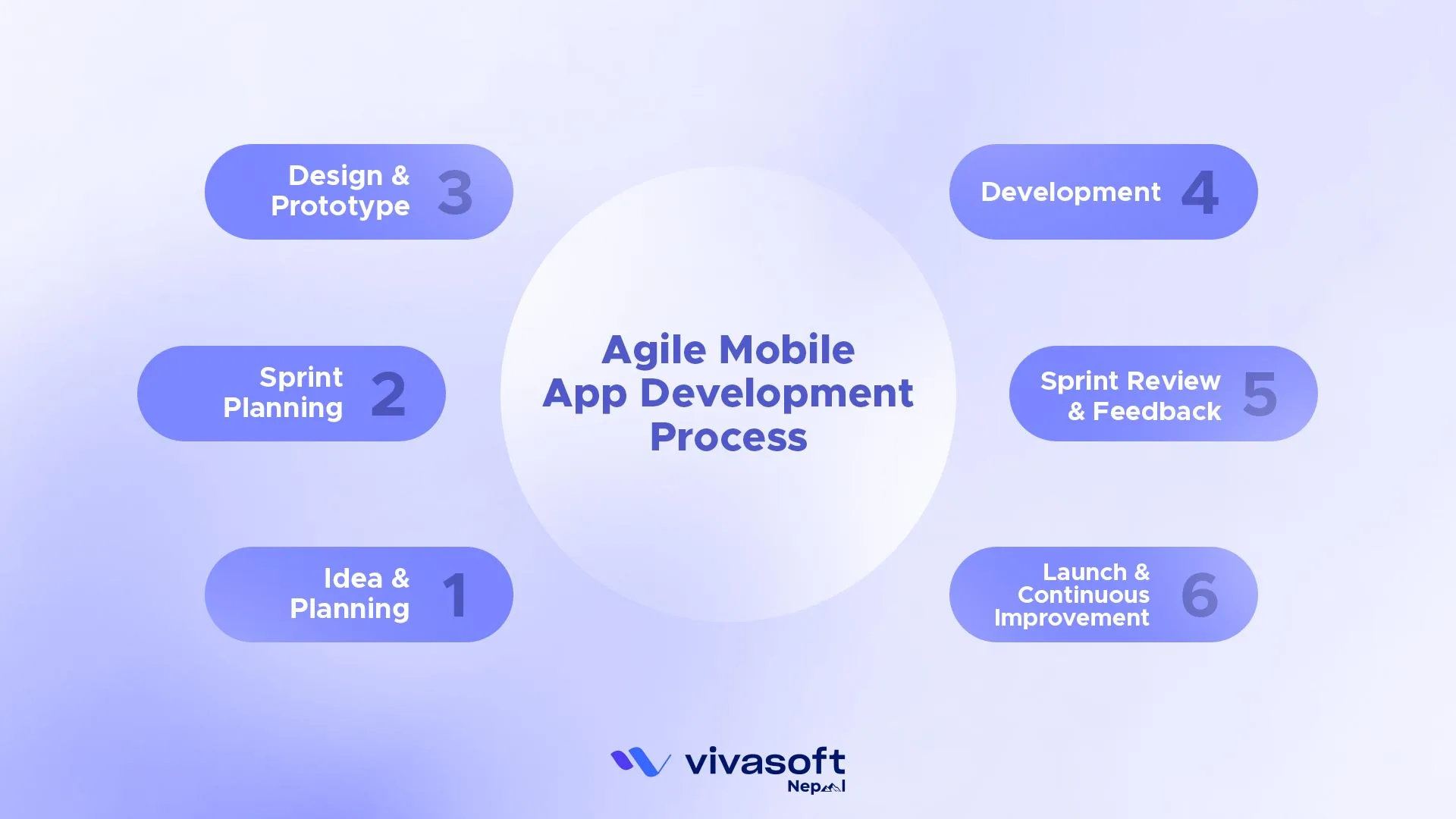
Agile Mobile App Development Process
Agile works in cycles. Each cycle builds something that works, shows what needs fixing, and makes the app better step by step.
- Idea & Planning: Decide what the app should do, the main features it needs, and who will use it.
- Sprint Planning: Break the work into short chunks (sprints) so the team can focus on small, clear goals.
- Design & Prototype: Make early designs and clickable models to see what works and what needs change.
- Development: Build the app in parts. Release small, usable sections regularly so they can be tested.
- Sprint Review & Feedback: Check each part after a sprint, fix problems, and improve before moving on.
- Launch & Continuous Improvement: Release the app. Watch how it performs and keep improving it over time.
Waterfall Methodology
Waterfall Methodology moves like walking along a straight path, one careful step at a time. It’s chosen when the project is stable, the goals are clear, and surprises are unlikely.
This method works best when deadlines are fixed and the plan is solid, giving a steady, controlled flow from start to finish.
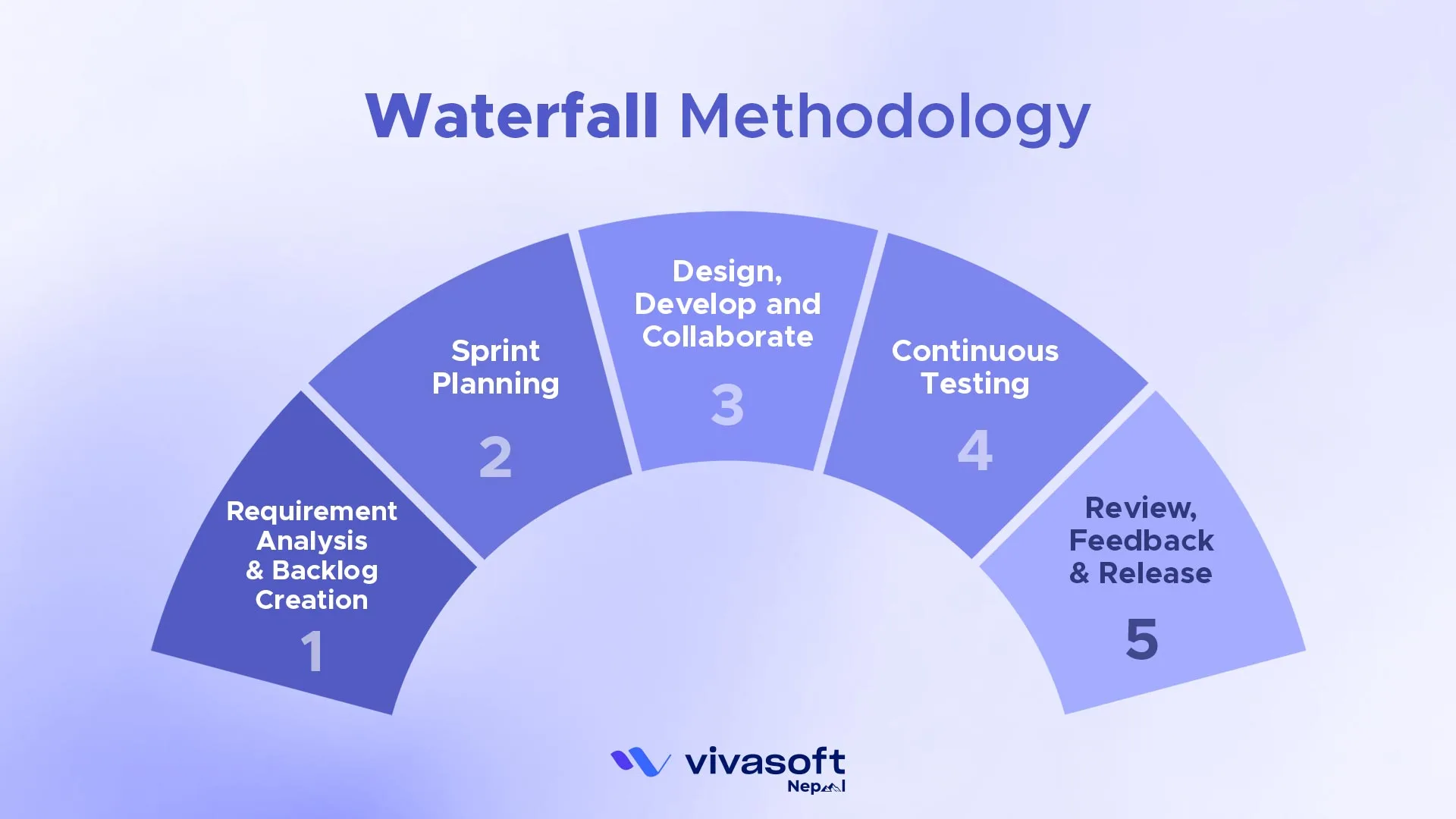
Waterfall Mobile App Development Process
In waterfall methodology, each stage has its own place. Only when one is done does the next begin. It goes like this:
- Requirement Analysis & Backlog Creation: Gather all features and expectations, make a strong plan.
- Sprint Planning: Plan each phase carefully, keep work smooth, avoid surprises.
- Design, Develop, and Collaborate: Designers create, developers build, team stays aligned.
- Continuous Testing: Test after building, catch problems early, keep things stable.
- Review, Feedback & Release: Check everything, make small fixes, then release calmly.
Rapid Application Development (RAD)
RAD breaks development into small, functional pieces. Each part comes to life quickly, insights surface fast, and the process keeps evolving.
Deadlines stay tight, requirements shift, and progress remains visible, reducing risk without freezing movement.Each piece runs on its own, developed and tested simultaneously, teaching something new with every iteration.
RAD works best when deadlines are tight, requirements are changing, and progress needs to appear fast, keeping momentum alive.
Lean Methodology
Lean focuses only on what actually matters, cutting away anything unnecessary. The team moves sharply and efficiently, every step is purposeful, avoiding wasted effort, delivering with clarity and intent. This approach ensures precise execution, where every action directly contributes to value.
Processes are always under review, optimized if they slow progress. Lean methodology proves its worth when resources are limited, deadlines press hard, and efficiency matters most, keeping every step focused on real value.
Hybrid Methodology
Hybrid walks the line between structure and flexibility, mixing planning with adaptability. Some parts are strict and sequential, others iterative, allowing adjustment as the project evolves.
It balances control with responsiveness, like following a map but watching the environment carefully. Complex projects often require a balance, with certain aspects being predictable while others remain uncertain.
Hybrid methodology works when guidance is needed without locking the team into a rigid path, letting both planning and learning coexist naturally.
What Makes Each Mobile App Development Method Unique?
Some methods are quick, changing step by step as problems appear. Others stay steady, following a clear plan. Such differences guide how challenges are tackled, how tasks flow together, and how the end product comes alive for users.
| Perspective | Agile | Waterfall | RAD | Lean | Hybrid |
|---|---|---|---|---|---|
| Flexibility | Very high, adapts to changes | Low, rigid structure | Medium, iterative cycles | Medium, focuses on essentials | High, mixes approaches |
| Speed | Moderate, steady pace | Slow, follows steps sequentially | Very fast, prototypes quickly | Fast, avoids waste | Moderate to fast |
| Complexity Handling | Handles complex, evolving projects well | Best for simple, clear projects | Good for evolving projects | Best for focused, lean projects | Can handle both simple and complex |
| Cost Control | Flexible, can adjust as needed | Predictable, but hard to change | Can be higher due to iterations | Efficient, focuses only on value | Balanced |
| Maintenance & Updates | Easy to update continuously | Hard to adjust after release | Moderate, iterative improvement | Focus on minimalism, easier updates | Adaptable to updates |
What Factors to Consider When Choosing the Right Mobile App Development Methodology in Nepal?
The daily execution and management of an app development project are planned by the selected development methodology. It determines how teams communicate, solve problems, and keep things moving without getting stuck or confused.
- Project Scope: A simple app fits a flexible method that allows quick shifts. Complex apps demand strict planning to avoid mistakes and delays.
- Client Requirements: If the client wants constant involvement and adjustments, agile is the way. For fixed deliverables and deadlines, traditional methods work better.
- Time Frame: Short deadlines need iterative delivery of features to keep on track. Longer timelines allow careful, sequential development.
- Budget: Agile can raise costs due to ongoing changes. Fixed-budget projects do better with traditional approaches.
- Maintenance and Updates: Apps require continuous care, meaning the chosen method must make ongoing updates manageable and efficient for the team.
Conclusion
In Nepal, the decision on which mobile app development methodology to follow is never just a checkbox on a plan. It grows out of the project’s nature. Agile shines when the concept is still shifting, open to change, and in need of flexibility. Waterfall stays steady when every milestone is locked in from the start.
RAD, Lean, and Hybrid methods keep things moving at a fast pace but hold tight to accuracy. The match between method and project can make or break the entire build.
The truth is, the method is just the framework. It only works if the hands guiding it know exactly what they’re doing. An experienced team can take the right approach and make it flow- smoothly, without chaos, without waste.
That’s why the top mobile application development companies in Nepal deliver on time, protect quality, and leave room for the product to grow without breaking later.
FAQs
What is the most recommended methodology for mobile app projects in Nepal?
The Agile approach works well in Nepal because it moves projects forward in short, manageable steps. Teams can test, adjust, and keep progress steady without wasting time or resources. This flexibility fits well with limited budgets and timelines.
Why is MVP focus important for startups developing apps in Nepal?
An MVP reduces the concept to its essential core. Putting it out early shows exactly where the product shines and where it falls short. That knowledge keeps the focus sharp and prevents effort from being poured into the wrong places.
How will future trends like 5G and AI influence app development methodologies in Nepal?
With 5G, teams can test and deploy heavy, data-driven features instantly, without lag holding them back. AI steps in to automate testing, predict issues, and guide design decisions. Together, they’ll shift app development methodologies in Nepal toward faster cycles, smarter planning, and real-time insight-driven development.

